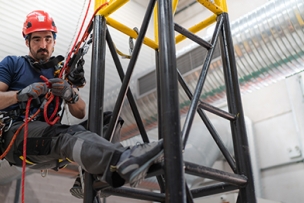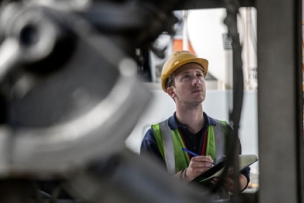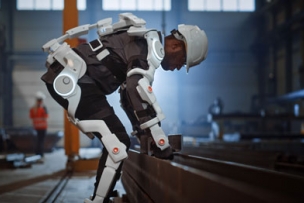Failure to comply with OSHA’s regulations may result in warnings, sanctions and fines, which can cost your company thousands of dollars. Earlier this year, OSHA increased the penalties it charges for workplace safety and health violations, with the maximum fine for a willful violation rising to $134,937 from $132,598.
The Importance of Wearing Safety Shoes
Workplace foot injuries are no small matter. According to Occupational Health & Safety magazine, the U.S. workforce suffers around 100,000 occupational foot injuries annually, averaging 10 days of missed work for each injury. When you add to this the potential cost of OSHA fines or workers’ compensation claims, and the loss of workplace productivity due to an injury, ignoring foot protection can be a costly mistake for a company.
Matching the best safety footwear to the job at hand is not as straightforward as you might think. Each work environment is different, and a worker may encounter many different hazards on a worksite during a day.
When choosing safety shoes for your employees, it’s worth thinking through the various dangers your employees may face as they do their required tasks. You may also ask yourself what the most common injuries in your workplace are: Do most of the injuries happen because of slips and falls? If so, consider footwear with a strong grip. Are employees standing for long periods? If they are, shoe comfort could be a high priority.
Read more: Flammability Limits: How to Reduce Fire Hazard Risks in Your Facility
Common Causes of Workplace Foot Injuries
Footwear manufacturers are constantly working to provide products that meet the needs of specific work conditions or industries. Generally speaking, safety footwear is designed to protect workers from the following common workplace hazards:
- Injuries from falling and flying objects
- Slips, trips and falls
- Punctures and cuts due to sharp objects
- Burns
- Electrical injuries
- Fatigue and musculoskeletal conditions
- Extreme temperatures
Today’s safety shoes are durable and built with innovative technology to make them lighter and more comfortable, and they are designed to improve worker performance and reduce fatigue.
Different Types of PPE Footwear
Safety footwear comes in a wide variety of forms, of course, offering protection for the toes, or from penetration of the sole. Boots and shoes made from rubber or plastic offer protection from oil or corrosive substances, while nonconductive shoes protect you from live electrical circuits.
Here’s a look at some of the most common forms of safety shoes:
Safety-toed footwear: This is a common form of safety shoe that has a hard covering around the toe to keep the wearer’s foot safe from crushing injuries. This footwear is commonly used in workplaces where heavy industrial equipment is used, especially when items can easily fall on a worker’s foot.
Shoes with sole protection: These shoes include outsoles that are designed to protect the wearer from corrosive substances, to provide more grip on slippery surfaces, or when traction is needed in uneven, outdoor environments. A heavy-duty sole may also protect workers when they step on sharp objects or are struck by sharp objects from above.
Steel insole shoes: This footwear has a steel insert to support the foot and offer greater comfort to workers performing high-impact tasks, such as operating a forklift or driving heavy trucks. These shoes help to stabilize the foot and reduce the effect of heavy-impact work.
Foot and metatarsal guards: These shoes are protective guards—shoe-caps and metatarsal guards—worn over existing shoes to protect the tops of feet. They reduce the impact of accidents that can occur when heavy equipment falls on a worker’s feet, particularly for jobs where workers lift or use heavy equipment and machines.
Shoes for electric hazards: This footwear is designed to protect those working with electricity, circuits, wiring and other tasks involving high-voltage machines and devices. The sole is insulated to help reduce the possibility of an electric shock.
Other types of foot protection for manufacturing settings may include ice traction footwear, insoles, overboots, overshoes and spats.
As with any other PPE, safety footwear should be regularly checked for wear and tear, including holes, cracks, worn soles and other damage that could impair its protective abilities.
What are your primary considerations when purchasing safety footwear? What best practices have you established? Share your thoughts in the comments below.





Talk to Us!
Hi.
We are currently looking for the best place to get safety shoes/boots for our manufacturing plant workers and restaurant workers. Is there a discount offering when ordering in bulk? Do you specialize in these types of shoes/boots? Thank you so much for any help you can offer.
6Please provide any information that would assist us in our search for safety shoes.
5Leave a reply
Your email address will not be published. Required fields are marked *